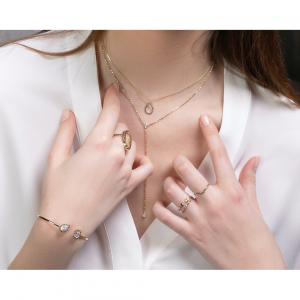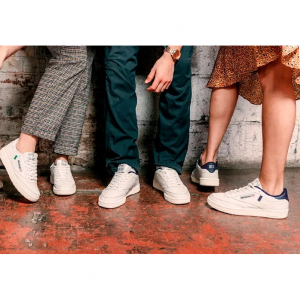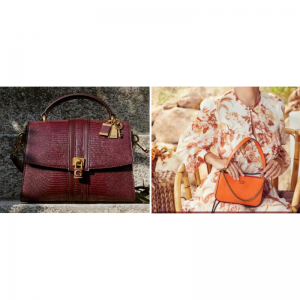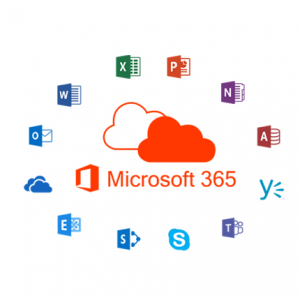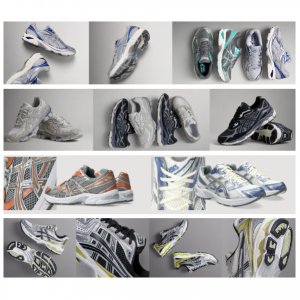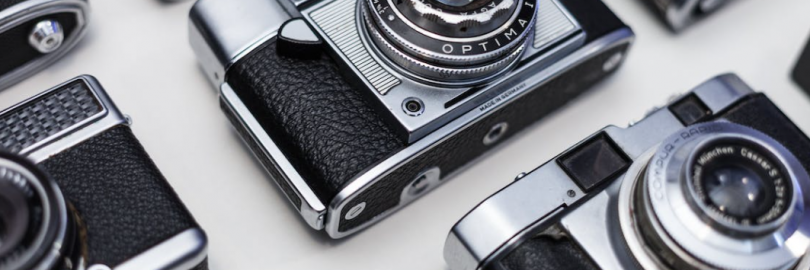
Sony A7 IV vs. Canon EOS R6 vs. Nikon Z6 II: Pros & Cons and Final Verdict
- In recent years, almost all major camera brands offer great mirrorless options, it is a good time to look at their offerings and compare their differences. Today, we will compare mirrorless cameras in the $2K - 2.5K range, namely the Sony A7 IV, Canon EOS R6 and Nikon Z6 II. In this article, we will explore different factors such as specifications, camera ergonomics, imaging and lens selection. Let's see that is Canon R6 good for photography? Is the Sony A7 IV better than Canon EOS R6? Or is Canon EOS R6 better than Nikon Z6 II?
Sony A7 IV Overview
Google Users Rating:4.7/5.0

The Sony A7 IV is the best mirrorless all-rounder you can buy right now. It isn't as powerful as the Sony A1, as fast as the Canon EOS R6, or as affordable as the Fujifilm X-T4, but it does offer a brilliant blend of photographic power and video versatility. By effectively combining two cameras in one, it's the best example so far of the hybrid convenience that modern mirrorless cameras can offer.
An all-arounder that pushes beyond basic, the Sony a7 IV does double duty with strong stills and video performance. An advanced hybrid mirrorless camera, the a7 IV has the resolution and AF performance that appeals to photographers along with robust 4K 60p video recording for filmmakers and content creators.
It's a stronger performer than the a7 III (which is still on sale for around $2,000), and earns our Editors' Choice award in the small, but highly competitive enthusiast category.
Key Specifications
33MP BSI CMOS full-frame sensor
Up to 10 fps shooting in lossy Raw with extensive buffer
In-body stabilization rated up to 5.5EV
Full-width oversampled 4K from 7K, up to 30p
4K/60p (from 4.6K capture) in Super35 / APS-C mode
10-bit video or HEIF stills capture
H.265 video, S-Cinetone color mode
3.69M dot OLED viewfinder
Twin card slots (1x CFe A/UHS-II, 1x UHS-II SD)
Full-time Bluetooth LE connection
Advantages and Disadvantages
| Pros | Cons |
|
|
Where to Buy Sony A7 IV Cheapest?
Adorama:Starting at $2498 (up to 8% cashback)
B&H Photo Video: Starting at $2498 (up to 1.5% cashback)
Money Saving Tip:
If you like online shopping, don't forget to sign up at Extrabux!(What is Extrabux) , then you can enjoy up to 30+% cashback on your purchase from Extrabux! Sign-Up Bonus: Free to join it & get $20 welcome bonus! Student Benefits:As long as you are a student at school, you can get a free whole year long VIP Card worth $199.
Extrabux.com cooperates with many merchants, such as: Walmart (Up to 4% cashback), Sephora(4% -5% cash back),Dior (Up to 6% cash back), Moosejaw (5% -6% cash back), LOOKFANTASTIC (Up to 10% cash back), Microsoft (Up to 7% cash back) and so on.
What's in the Box?
Sony a7 IV Mirrorless Camera
Sony NP-FZ100 Rechargeable Lithium-Ion Battery (2280mAh)
AC Adapter and Power Cord
Sony ALC-B1EM Body Cap for E-Mount Cameras
Shoulder Strap
Accessory Shoe Cap
Eyepiece Cup
USB Type-C to Type-A Cable
Limited 1-Year Warranty
Is the Sony A7 IV Worth Buying?
Buy it if...
You're upgrading from a full-frame DSLR
The latest mirrorless cameras have now evolved to an extent that they're now a big upgrade from most DSLRs. The A7 IV is a great example, thanks to its class-leading autofocus, hugely impressive video skills and modern shooting experience.
You need an all-rounder for stills and video
There are better specialist cameras out there, but as an all-rounder the A7 IV is the best mirrorless camera you can buy.
Your Sony A7 III is starting to feel its age
It's quite rare for new cameras to make significantly leaps over their predecessors these days, given how mature camera tech is.
Don't buy it if...
You mostly shoot sports and action
While the Sony A7 IV is by no means a slow coach, there are better cameras out there for pro sports performance.
You need something discreet for travel or street shoots
The A7 IV is undeniably powerful, but its sizable grip and 658g weight mean it's also a fairly big lump compared to other mirrorless cameras.
Value is your main priority
As tempting as the Sony A7 IV is, it is also likely overkill for many amateur photographers. If you don't shoot much video, or tend to specialize in one particular style, then you'll get more bang for your buck with a more specialist camera and an extra lens or two with the money saved.
Canon EOS R6 Overview
Google Users Rating:4.8/5.0

The Canon EOS R6 is a full-frame mirrorless camera designed for enthusiast photographers and videographers that require high-end performance. The R6 shoots 20.1 megapixel stills photos and captures 4K 60 frames per second video with Canon Log and HDR PQ to cater for even hybrid shooters that want to make movies as much as still images.
Delivering incredible performance at speeds of up to 12 fps, the EOS R6 camera can capture the split-second details between a subject's movements. This is great for dynamic action photos such as athletes, animals or vehicles in motion. or silent 20 fps with an electronic shutter, is ideal for working with moving subjects.
Fantastic performance for enthusiasts with great high ISO image noise handling and superb stills and video capture modes, it's a great mid-level full-frame performer. Hybrid shooters will benefit from enhanced video recording with C-Log for more flexible editing.
Key Specifications
20MP Full-Frame CMOS Sensor
DIGIC X Image Processor
4K60p and FHD 120p 10-Bit Internal Video
Sensor-Shift 5-Axis Image Stabilization
12 fps Mech. Shutter, 20 fps E. Shutter
Dual Pixel CMOS AF II with 1053 Points
0.5" 3.69m-Dot OLED EVF
3" 1.62m-Dot Vari-Angle Touchscreen LCD
Subject Tracking with Deep Learning
Dual SD UHS-II Memory Card Slots
Advantages and Disadvantages
| Pros | Cons |
|
|
Where to Buy Canon EOS R6 Cheapest?
Bestbuy:from $2499 (up to 0.5% cashback)
Adorama: from $2499 (up to 8% cashback)
What's in the Box?
Canon EOS R6 Mirrorless Camera
Canon LP-E6NH Lithium-Ion Battery (7.2V, 2130mAh)
Canon LC-E6 Charger for LP-E6 Battery Pack
Canon R-F-5 Camera Cover
Camera Strap
Limited 1-Year Warranty
Is Canon EOS R6 Worth Buying?
Buy it if...
You want a worthy upgrade
If you’re currently using the EOS R, the RP or any of Canon’s DSLRs, the R6 is more than a worthy upgrade.
You want a stills camera
It might have 4K/60p video recording capabilities but there are better cameras out there than the R6 if your primary goal is filmmaking.
You’re lusting after the R5 but can’t afford it
The R5 has got the photography world buzzing. However, not everyone needs a 45MP sensor or 8K video capabilities.
Don't buy if...
You want more resolving power
The R6’s 20MP sensor produces great images but landscape photographers in particular might want to consider a higher resolution.
You’re budget-conscious
The EOS R6 has an upper-midrange price tag that, in the current economic downturn, can’t be considered affordable. And it gets a little difficult to justify the cost when you can get really good full-frame mirrorless cameras with higher 40+ MP sensors for about the same price.
You prefer the advantages a DSLR can offer
The R6’s EVF is excellent to say the least, but there’s a case to be made for optical viewfinders on DSLRs.
Nikon Z6 II Overview
Google Users Rating:4.8/5.0

The Nikon Z6 II is an updated version of the company's 24MP multimedia full-frame mirrorless camera. It gains more processing power to add improved autofocus and a few other tweaks to an already well-rounded feature set.
More speed, more versatility, more performance, the Nikon Z6 II is an updated take on the all-rounder mirrorless camera designed for high-end photo and video applications. Despite the wealth of upgrades, the Z6 II retains its familiar form factor and prized image quality to benefit working multimedia image-makers.
To that end, pretty much all the main features of the Z6 II are inherited from the Z6. This includes the excellent full-frame 24.5MP BSI CMOS sensor, which delivers images with excellent levels of detail, plenty of dynamic range and a very good high-ISO noise performance.
Key Specifications
24.5MP FX-Format BSI CMOS Sensor
Dual EXPEED 6 Image Processors
UHD 4K30 Video; N-Log & 10-Bit HDMI Out
14 fps Cont. Shooting, ISO 100-51200
273-Point Phase-Detect AF System
3.6m-Dot OLED Electronic Viewfinder
3.2" 2.1m-Dot Tilting Touchscreen LCD
5-Axis In-Body Vibration Reduction
Dual Memory Card Slots
Advantages and Disadvantages
| Pros | Cons |
|
|
Where to Buy Nikon Z6 II Cheapest?
B&H Photo Video:Starting at $1,996.95 (up to 1.5% cashback)
Adorama: Starting at $1,996.95 (up to 8% cashback)
What's in the Box?
Nikon Z6 II Mirrorless Camera
Nikon EN-EL15c Rechargeable Lithium-Ion Battery
Nikon MH-25A Battery Charger for EN-EL15 Li-Ion Battery
Nikon UC-E24 USB Cable
HDMI/USB Cable Clip
Nikon BS-1 Hot Shoe Cover for Nikon SLR Cameras
Nikon AN-DC19 Camera Strap
Nikon BF-N1 Body Cap
Nikon DK-29 Rubber Eyecup
Limited 1-Year B&H Warranty
Is the Nikon Z6 II Worth Buying?
Buy it if...
You’re looking for a versatile and lightweight travel camera
With a rugged build, plenty of advanced features and a sensor that can cope extremely well with a range of lighting conditions, the Z6 II is a great option for travel.
You’re looking to upgrade
If you feel like you’ve outgrown your current Nikon DSLR (or Z50 for that matter), the Z6 II is a great upgrade.
You’re looking for something to complement your Nikon DSLR
If you’ve got a full-frame Nikon DSLR such as the D850, the Z6 II is a sound choice for a second body.
Don't buy it if...
You’ve got a load of F-mount lenses
If you’re tempted to switch to mirrorless and already have a stack of F-mount FX lenses for your DSLR, you might be better off looking at Nikon’s excellent D780.
You want to upgrade from the Z6
There’s no question that the Z6 II is an improvement on the Z6, but unless you’re desperate for a second card slot or want to shoot faster bursts, it’s not worth upgrading.
You’re not going to have much left for lenses
Nikon has done a solid job of turning out a series of S-line lenses for its new full-frame system in the last couple of years, but with the exception of the 24-50mm f/4-6.3, the most affordable lens for the Z6 II is the 50mm f/1.8 at around $500 / £500.
Sony A7 IV vs. Canon EOS R6 vs. Nikon Z6 II:Comparison Side by Side
1.Design and handling
Sony A7 IV
Modern 3.69-million dot electronic viewfinder
Useful vari-angle touchscreen with Sony's latest UI
Takes CFexpress Type A cards, which are rarer than Type B
Canon EOS R6
Deep, ergonomic grip
Joystick multi-controller
Dual card slots
Nikon Z6 II
Design is virtually identical to the Z6
Now features a second card slot
Tilt-angle display not perfect for video
Winner: Sony A7 IV
A7 IV has the most compact body of the three,and lighter at the same time. Ergonomics is vey subjective, changes depending on your hand size and preferences so won't take it as a decision factor.
| General | Sony A7 IV | Canon EOS R6 | Nikon Z6 II |
Battery Type | 1 x NP-FZ100 Rechargeable Lithium-Ion, 7.2 VDC, 2280 mAh (Approx. 520 Shots) | 1 x LP-E6NH Rechargeable Lithium-Ion | 1 x EN-EL15c Rechargeable Lithium-Ion |
| Power Consumption | <5.7 W | Not Specified | Not Specified |
| Tripod Mounting Thread | 1 x 1/4"-20 Female (Bottom) | 1 x 1/4"-20 Female (Bottom) | 1 x 1/4"-20 Female (Bottom) |
| Accessory Mount | 1 x Hot Shoe Mount | 1 x Hot Shoe Mount | 1 x Hot Shoe Mount |
| Material of Construction | Magnesium Alloy | Magnesium Alloy, Polycarbonate | Magnesium Alloy |
| Dimensions (W x H x D) | 5.2 x 3.8 x 3.1" / 131.3 x 96.4 x 79.8 mm | 5.43 x 3.84 x 3.48" / 138 x 97.5 x 88.4 mm | 5.3 x 4 x 2.7" / 134 x 100.5 x 69.5 mm |
| Weight | 1.4 lb / 658 g (With Battery, Recording Media) | 1.5 lb / 680 g (With Battery, Recording Media) | 1.1 lb / 500 g(With Battery, Recording Media) |
| Focal Length | 24-70mm f/2.8 GM | 24 - 105mm | 24 to 70mm |
2.Autofocus System
| Focus | Sony A7 IV | Canon EOS R6 | Nikon Z6 II |
| Focus Type | Auto and Manual Focus | Auto and Manual Focus | Auto and Manual Focus |
| Focus Mode | Continuous-Servo AF, Direct Manual Focus, Manual Focus, Single-Servo AF | Continuous-Servo AF, Manual Focus, Single-Servo AF | Continuous-Servo AF, Full-Time Servo, Manual Focus, Single-Servo AF |
| Autofocus Points | Phase Detection: 759 Contrast Detection: 425 | Phase Detection: 1053 | Phase Detection: 273 |
| Autofocus Sensitivity | -4 to +20 EV | -6.5 to +20 EV | -6 to +19 EV |
Winner: Sony A7 IV & Canon EOS R6
Kudos to Sony for implementing its best Autofocus system (as used on Sony A1) to A7 IV, it is hard to find a fault in this system.
Canon likewise performing head to head with Sony in this department. The eye tracking and animal tracking tracking on these two cameras gives them almost an unfair advantage over many less advanced AF systems, such as the one in Nikon Z6 II.
Although Nikon recently made major advancements in this area, they are still behind Sony and Canon.
3.Image and Video Quality
Sony A7 IV
Image quality isn't a dramatic step up from Sony A7 III
S-Log 3 and S-Cinetone profiles for video editors
Excellent oversampled 4K/30p video quality with 10-bit 4:2:2 option
Canon EOS R6
Excellent color reproduction
Disappointing dynamic range in JPEGs
Good ISO performance
Nikon Z6 II
Same image quality as Z6
Good high-ISO performance
Excellent sharpness and detail
| Imaging | Sony A7 IV | Canon EOS R6 | Nikon Z6 II |
| Lens Mount | Sony E | Canon RF | Nikon Z |
| Lens Communication | - | Yes | Yes |
| Sensor Resolution | Actual: 34.1 Megapixel Effective: 33 Megapixel | Actual: 21.4 Megapixel Effective: 20.1 Megapixel (5472 x 3648) | Actual: 25.28 Megapixel Effective: 24.5 Megapixel (6000 x 4000) |
| Sensor Type | 35.9 x 23.9 mm (Full-Frame) CMOS | 36 x 24 mm (Full-Frame) CMOS | 35.9 x 23.9 mm (Full-Frame) CMOS |
| Image Stabilization | Sensor-Shift, 5-Axis | Sensor-Shift, 5-Axis | Sensor-Shift, 5-Axis |
| Built-In ND Filter | None | None | None |
| Capture Type | Stills & Video | Stills & Video | Stills & Video |
>>Video
Winner: Sony A7 IV
Sony A7 IV's 4K video is oversampled from 7K up to 30 and has the most detailed 4K quality of any hybrid camera
Sony A7 IV's Gyro based stabilization gives the choice of extra level of stabilization under certain conditions.
A7 IV sports a full-size HDMI port (Good job Sony!) whereas Canon and Nikon has mini HDMIs.
The new added Mode dial on the Sony A7 IV makes switching between Stills and Video modes a breeze, changing the menu selection at the same time.
With SLog2, SLog3 and Sony's professional S-Cinetone Color modes and H265 video, offers the most versatile recording settings.
Others
Canon and Sony have an advantage with their fully articulating screen over Nikon's tilting screen while shooting video
All cameras have siilar level of rolling shutter effect in 4K recordinga as none of these has the stacked BSI CMOS sensors the more pro flagship models such as Sony A1, Canon EOS R3 and Nikon Z9 uses.
As in stills, Sony and Canon both has much better Auto Focus compared to Nikon and we would give the edge to A7 IV of the two.
Both cameras can can record 4K 60p video at their highest setting but the A7 IV and Z6 II has a 1.5x (APS-C) crop factor at this setting whereas the Canon R6 has only a slight 1.07x crop.
All cameras can record 10bit 4:2:2 video however while Sony and Canon can do this internally, Nikon can only record this externally over HDMI.
>>Image Stabilization
Winner: Canon EOS R6
All 3 cameras has 5-axis in-body image stabilization systems and they are very effective but the general consensus is that the Canon has the most effective IS especially when paired with its RF lenses that has optical image stabilization.
One less known feature that Sony has though is the Gyro data base stabilization for videos. This lets you stabilize the video footage post-shooting by using a software, it introduces an extra crop to the shootage though and for the best results, the shutter spped ahs to be higher than normal.
>>Image Quality and Sensor
Winner: Sony A7 IV
Sony A7 IV with its 33 MP sensor has the highest resolution of the three while Nikon Z6 II has a 25MP sensor and the Canon EOS R6 has a sensor with only 20MP resolution.
33MP may become the new sweet spot for mid-range full frame cameras since it leaves a lot of room for cropping in post-process while maintaining a similar high ISO performance with the other two.
Even when shot with 1.5x APS-C crop in a pinch (one scenario is to use APS-C E-mount lenses although not ideal), you get 14.6MP still image files which is very acceptable for many use cases.
4.Lens Availability
Winner: Sony A7 IV
All these manfuacturers are known by their excellent lenses but when we look at the number of available lenses, Sony is in the best position, and it has the best third-party lens selection of all three by far.
Manufacturers such as Sigma and Tamron offers an extensive selection of Sony E mount lenses so it is possible to find at least one alternative lens for almost all focal ranges.
5.LCD
Winner: Nikon Z6 II
At 2100000dots resolution and 3.2"-inch diagonal size, Nikon has the largest and the highest resolution LCD screen.
On the other hand, Z6 II's screen is a Tilting type and Canon and Sony has a fully articulated screen. Both screen types has its advantages and fans but if you are more video focused, you will like the fully articulated screens whereas for more stills focused styles, tilting screens may be more preferable.
6.Continuous Shooting
Winner: Canon EOS R6
One compromise Sony had to make on Sony A7 IV due to its higher resolution 33MP sensor is the max continuous shooting speed.
Sony can only shoot 10fps max and this goes even lower if you shoot Uncompresses lossless format.
Nikon Z6 II can go up to 14fps and the Canon R6 goes up to an impressive 20fps with electronic shutter and 12fps with mechanical shutter.
7.Viewfinder
| Viewfinder | Sony A7 IV | Canon EOS R6 | Nikon Z6 II |
| Type | Built-In Electronic (OLED) | Built-In Electronic (OLED) | Built-In Electronic |
| Size | 0.5" | 0.5" | 0.5" |
| Resolution | 3,680,000 Dot | 3,690,000 Dot | 3,690,000 Dot |
| Eye Point | 23 mm | 23 mm | 21 mm |
| Coverage | 100% | 100% | 100% |
| Magnification | Approx. 0.78x | Approx. 0.76x | Approx. 0.8x |
| Diopter Adjustment | -4 to +3 | -4 to +2 | -4 to +2 |
Winner: Nikon Z6 II
All cameras has the same 3,690,000dots resolution but the Viewfinder on the Nikon with its 0.80x magnification is slightly larger than Canon's 0.76x and Sony's 0.78x.
8.Battery Life
Winner: Sony A7 IV
Sony's NP-FZ100 battery provides the best battery life of the three with a big lead. It is rated for 600 shots wth CIPA standards, Canon has a battery life of 360 shots and Nikon has a battery life of 410 shots.
9.Price
Sony A7 III
Announced December 2021
Available to buy now for $2,499 / £2,400 / AU$$4,299
Similar price to the Canon EOS R6
Canon EOS R6
Announced July 2020
Available right now for $2,499 / £2,499 / AU$4,499
Limited stock in most markets
Nikon Z6 II
Announced October 14, 2020
Available right now for $1,999 / £1,999 / AU$$1,999
You can also buy the Nikon Z6 II body-only
Winner: Nikon Z6 II
As seen here, the Z6 II is significantly cheaper than the other two. Sony A7 IV sells for $2499 Body only, Canon R6 sells for $2499,same as A7 IV and Nikon Z6 II is priced at $1999 .
Sony A7 IV vs. Canon EOS R6 vs. Nikon Z6 II Full Comparison Chart
| Sony a7 IV | Canon EOS R6 | Nikon Z6 II | |
| MSRP (body) | $1999 | $2499 | $1999 |
| Pixel count | 24MP | 20MP | 24MP |
| Sensor tech | BSI-CMOS | CMOS | BSI-CMOS |
| AF system | On-sensor PDAF | Dual Pixel (On-sensor PDAF) | On-sensor PDAF |
| Image stabilization | 5-axis | 5-axis + sync with lens IS | 5-axis |
| CIPA rating | Up to 5EV | Up to 8EV | Up to 5EV |
| Maximum frame rate | 10 fps | 12 fps mech shutter 20 fps electronic | 12 fps (14 fps*) |
| Flash Sync speed | 1/250 sec | 1/250 sec | 1/200 sec |
| High Res mode | No | No | No |
| Viewfinder res / mag | 2.36M dots / 0.78x | 3.68M dots / 0.76x | 3.68M dots / 0.80x |
| Rear screen | 921k-dot tilting touchscreen | 1.62M-dot fully articulated touchscreen | 2.1M-dot tilting touchscreen |
| AF joystick | Yes | Yes | Yes |
| Top-plate settings display | No | No | Yes |
| Video capture | UHD 4K 24p (full sensor) UHD 4K 30p (1.2x Crop) | UHD 4K 60p (1.05x crop) | UHD 4K 30p (full sensor) UHD 4K 60p (1.5x Crop)*** |
| Log/HDR modes | S-Log2 / 3 / HLG 8-bit Internal | C-Log HDR PQ 10-bit Internal | N-Log |
| Memory cards | 1x UHS-II SD 1x UHS-I SD | Dual UHS-II SD | 1x CFexpress B 1x SD (UHS-II) |
| Battery life (CIPA) LCD/EVF | 710 / 610 | 510 / 380 | 410 / 340 |
| USB-charging | Yes | Yes | Yes |
| Dimensions | 131.3 x 96.4 x 79.8 mm | 138 x 98 x 88 mm | 134 x 101 x 68 mm |
| Weight (CIPA) | 658 g | 680 g | 675 g |
Conclusion:Which One to Buy?
The Sony a7 IV, Canon EOS R6 and Niko Z6 II have many things in common and we are sure that when it comes to image quality and autofocus, they deliver the same level of performance.
Sony a7 IV: The Sony a7 IV is the company's first enthusiast model to be launched since Canon, Nikon and Panasonic joined the full-frame mirrorless melee. Looking through, detail by detail, it appears to do enough to pull Sony back ahead of what has been our favorite camera in the the sub-$2500 part of the market.
There are no knockout punches landed against a camera as good as the R6, but the a7 IV keeps landing the blows: higher resolution, slightly longer battery life, fewer restrictions and more support tools in video.
Canon EOS R6: it's hardly a surprise to find that Nikon's most pressing competition comes from Canon. The R6 is more expensive and offers fewer direct control points than the Z6 II, but offers a simpler AF experience, impressive image stabilization, 10-bit internal video, larger area 4K/60 capture and the choice of some fast, quiet-focusing Nano USM lenses.
But the Nikon's video is still very good and exhibits less rolling shutter, the AF performance is broadly comparable, and the range of F1.8 primes may be more appealing than Canon's rather exotic initial offerings.
Niko Z6 II:The Z6 II is an extremely capable camera that will support the photographer in almost any situation you throw it into. It's comfortable to use, takes great photos, has a highly effective AF system and can be used to capture very good video footage.
It's not a huge step forward from the original Z6 but the ability to add a battery grip with vertical controls, and the addition of a second card slot only help to expand its already broad-ranging ability.
Related Read:
Canon vs. Nikon vs. Sony vs. Fujifilm: Which Brand Wins the Camera Showdown?
Sony A6000 vs. Canon M50 vs. Nikon D3500: Which Option is the Best?
Sony A6000 vs. A6100 vs. A6400 vs. A6600: Ultimate Comparison & Verdict 2025
Top 12 Cameras for Live Streaming on YouTube, Facebook and IG in 2025
Top 7 Vlogging Cameras for Beginners in 2025

Extrabux is an international cashback shopping site, offering up to 30% cashback from 10,000+ Stores!
Microsoft, Dell, HP, Lenovo, Alienware, Acer, Asus, Samsung, BestBuy, Walmart, Staples, Overstock, QVC, New Egg, Office Depot, eBay, etc.
Join to get $20 welcome bonus now! (How does Welcome Bonus work?)
Recommendation
-
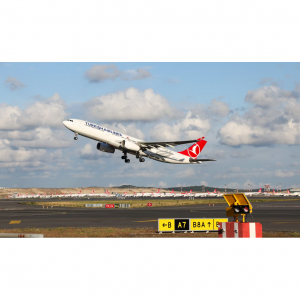
Is Turkish Airlines Good for International Flights?
-
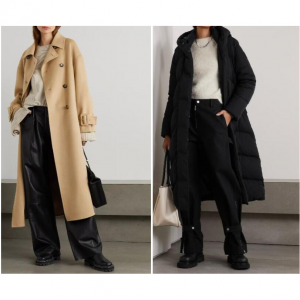
10 Best & Stylish Winter Coats for Women on NET-A-PORTER in 2025
-

Top & Best 12 Sneaker Apps/Websites for Raffles, Releases & Restocks in 2025
-

7 Best Gift Card Exchange Sites - Buy, Sell and Trade Discount Gift Card Safely and Instanly!
-

Top 9 Professional Skincare Brands for Licensed Estheticians 2025

